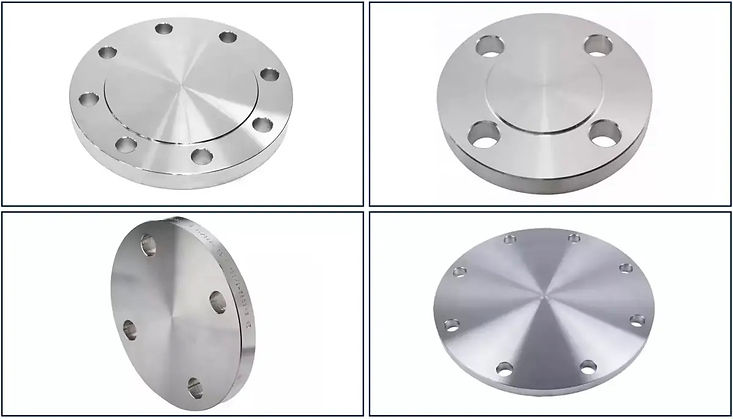Stainless Steel Flanges

Stainless steel flanges, referred to as SS flanges, are flanges made of stainless steel. Commonly used material standards and grades are ASTM A182 grades F304/L and F316/L, with pressure ratings ranging from 150, 300, 600 to 2500. Compared to carbon steel, stainless steel has better corrosion resistance and always looks good, so it is adopted by more industries.
Characteristics of 304 Stainless Steel Flanges
304 is a relatively versatile stainless steel, widely used in the manufacture of equipment and parts requiring good all-round performance (corrosion resistance and formability). In China, 304 steel is known as 0Cr19Ni9 or 0Cr18Ni9 stainless steel because 304 contains 19% chromium and 9% nickel.
Applications:
304 stainless steel is a widely used chromium-nickel stainless steel with good corrosion resistance, heat resistance, low temperature strength and mechanical properties. It is corrosion resistant in the atmosphere, and in the case of industrial atmospheres or heavily polluted areas, requires prompt cleaning to avoid corrosion. It is suitable for food processing, storage and transport. It has good processing performance and weldability. Used in plate heat exchangers, bellows, household goods, building materials, chemical and food industries.
Features of 316 SS Pipe Flanges
Compared to 304 stainless steel, 316 stainless steel material has added nickel and molybdenum and is known in China as 18Cr-12Ni-2.5Mo steel. As a result, it typically has 2.0% to 3.0% more molybdenum than 304 steel. This molybdenum element provides better resistance to high temperatures.
As a result, it has exceptionally good corrosion resistance, atmospheric corrosion resistance and high-temperature strength. It can be used under harsh conditions and has excellent work-hardening properties (non-magnetic).
Sulphuric acid is one of the most produced industrial chemicals. Type 304 is only resistant to 3% acid at room temperature, whereas Type 316 is resistant to 3% acid up to 50 °C and 20% acid at room temperature. Type 304 is therefore rarely used in contact with sulphuric acid. 904L and Alloy 20 can withstand higher concentrations of sulphuric acid above room temperature.
Applications:
316L stainless steel flanges provide good corrosion protection, superior to 304 in seawater and a variety of other media.
316 SS flanges are used in equipment resistant to sulfuric, phosphoric, formic and acetic acids. Applications include marine, pumps, chemical production, food industry, irrigation and other stainless steel piping systems.
Stainless steel flange
Standard
GB/T9124.1-2019
As an industrial wholesaler, we have gained a wealth of experience in our more than 20 years of company history, which we would be happy to pass on to you. Do you need advice or have a question? Send us a message and we will be happy to help you.
